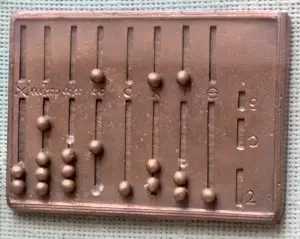In the age of smartphones, computers, and advanced calculators, it’s easy to forget the humble origins of the tools we use to perform arithmetic. One such tool with a rich and enduring history is the abacus. Often considered one of the world’s first calculators, the abacus has played a crucial role in human civilization for centuries. Join us on a journey through time as we explore the fascinating history of this ancient calculating device.
Origins of the Abacus
The exact origins of the abacus are shrouded in the mists of time, but it is believed to have been invented over 2,000 years ago in ancient Mesopotamia (modern-day Iraq). The earliest abacuses were simple, using pebbles or other small objects placed on a flat surface or within grooves in the sand for counting and calculation.
The Chinese Abacus

The abacus made its way to China, where it evolved into the iconic device we recognize today. Known as the “Suanpan,” the Chinese abacus consists of wooden rods or wires with beads that can be moved back and forth. This design greatly improved the efficiency of calculations. The Chinese abacus became an integral part of Chinese culture, education, and commerce, and it spread throughout East Asia.
The Roman Abacus

The Roman Empire also had its own version of the abacus, which they called the “Calculi.” Romans used this tool for various financial calculations, making it an essential tool in the business and trade of the time. The Roman abacus consisted of a board with grooves in which small stones or metal counters were placed to represent numbers.
The Islamic World’s Contributions

During the Islamic Golden Age (8th to 13th centuries), scholars in the Islamic world made significant advancements in mathematics and the use of the abacus. They introduced new methods of calculation and notation, which were instrumental in the development of algebra. The abacus played a vital role in preserving and transmitting mathematical knowledge during this era.
The European Renaissance

With the decline of the Roman Empire, the use of the abacus in Europe waned. However, during the European Renaissance in the 14th and 15th centuries, there was a renewed interest in ancient knowledge, including mathematics. As a result, the abacus was reintroduced to Europe, primarily through translations of Arabic and Greek mathematical texts. European scholars adapted and incorporated the abacus into their mathematical education.
The Abacus in Modern Times

Despite the advent of electronic calculators and computers, the abacus continues to be used and appreciated in various parts of the world. It remains a crucial tool for mental arithmetic, aiding in the development of mathematical skills and mental agility. In some cultures, such as Japan and parts of China, the abacus is still taught in schools as part of the curriculum.
Conclusion
The history of the abacus is a testament to human ingenuity and the timeless need for efficient methods of calculation. From its humble beginnings in ancient Mesopotamia to its evolution in China, adaptation in Europe, and continued use in the modern era, the abacus has endured as a symbol of mathematical prowess. While technology has evolved dramatically, the abacus’s legacy lives on, reminding us of the enduring power of human innovation and our quest to make mathematics more accessible and manageable.
Read More
- Webnovel Romance Novels: A Guide to the Genre
- How To Travel Sustainably: Tips for Responsible Adventurers
- Tamper-Proof Energy Meters and Their Benefits


